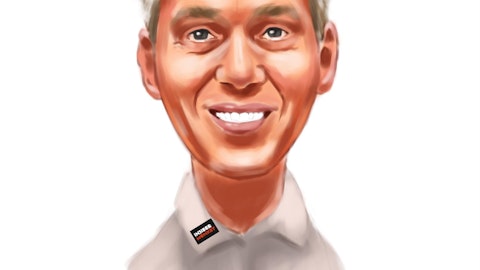In this article we take a look at the 21 largest generic drug companies . Click to skip ahead and jump to the 10 largest generic drug companies.
Looking for the largest generic drug companies? Drugs, medicines, and healthcare have been more in the news in 2020 than we would have imagined in the beginning of the year. The Covid-19 crisis has put the pharmaceuticals industry forefront like never before and I’m sure you have heard “hydroxychloroquine” more times this year than you intended to! We’ve probably depended on generic drugs all through our lives. Remember popping Tylenol, when that headache you had got a tad bit too nagging? Well, that is acetaminophen! Generic drugs are identified by their chemical formula, and not a brand name. So basically, generic drugs would serve the exact same purpose, just without the brand name, and often at a much cheaper price.
Are you worried that generic drugs might be less effective than their brand name counterparts because of the huge cost difference? Well, not really! Generic drug prices are regulated by the FDA (U.S. Food and Drug Administration) and ensured that they are as safe and effective as brand name drugs of the same composition and dosage. Under the FDA Generic Drugs Program, generic drugs are monitored to make sure that these requirements are continuously met and no breaches occur. Over 3500 inspections are undertaken in manufacturing units in a year so that one can take their generic medications without having to worry!
The generic medicines market might not be as lucrative in the pharmaceuticals space, but it is still a huge market with opportunities. The total value of generics in the total pharma sales might add up to a modest 9%-11%, however, by volumes they represent the majority. It is the price difference that brings down the profitability to a certain extent. Generics can be anywhere between 10% to a whopping 80% cheaper than their branded counterparts.

pikselstock/Shutterstock.com
The market has seen a growth in the recent times due to the constant escalating prices in the healthcare segment. Healthcare is one of the essential industries and the growing demands have put an upward pressure on prices. Generics in this case has increasingly become the preferred choice for several consumers who understand that branded products are actually at par with generics, but we only end up paying more for the brand names.
We are living in times where diseases have been more on the rise than ever before. Covid-19 is the biggest example for infectious diseases that are more prevalent in the current times than what human kind has had to face before. The frequency of infectious diseases have not only increased but is likely to persist as climate conditions deteriorate and there is increasing interference of humans into the ecologies and habitats of wildlife. But, even apart from infectious diseases, it is not hard to see that other conditions are also on the increasing trends – this includes chronic diseases, diabetes & cardiovascular diseases. This is obviously attributable to our sedentary modern lifestyles and unhealthy eating habits. All of these health issues and diseases have given the generic drug market the push. Also, with pressures on healthcare rising and expenditure increasing, generics have turned out to have a favorable market as demands for them rise. The only deterrent for the market has been the stringent government regulations and the wide belief of adverse effects of drugs. Despite this, the generics market is expected to grow here due to new drugs coming into focus, more clinical trials taking place and mass licensing and pooling of resources for new products by vendors.
The generic drug market can further be broken down into several segments. These can be based on product types, applications, distribution channels, and also different regions. By product type the market can be categorized into simple generics, super generics, and biosimilars. While The US Food and Drug Administration (FDA) does not recognize the term ‘super generics’, they are the type of generic products which can be considered as value added generics generics or hybrids. They mainly are different from the original patented drugs in the formulation or method of delivery. They can be seen as the “improved” form of the already known drug. A biosimilar, on the other hand, is a biologic medicine derived from living organisms. Biosimilars are manufactured through sophisticatedly controlled biotechnology processes which are large, complex molecules or mixtures of molecules composed of living material. They are required to be identical to “reference products” and this criteria is highly monitored by the FDA.
Applications include cardiovascular products, anti-infective drugs, anti-cancer drugs, respiratory products, and so on. When considering distribution channels, the market can be segmented according to who the ultimate consumer is, if they are distributed through hospitals for in house use, or sold to ultimate consumers through pharmacies. Private clinics, drug stores, retailers etc. can be other forms of distribution channels used.
The largest generic drug companies are the market leaders commanding over 61% of the total revenue made by the 50 top players in the industry. It is apparent how the market is top-heavy and controlled by the top few. Regionally, North America has the most number of top players while other players are quite distributed. This shows how generics are growing globally, and not concentrated on regional basis, and are being adopted fervently as a lucrative product segment within the pharmaceutical space. Many of the biggest pharmaceutical companies in the world are eager to enter the generics segment either through specialized divisions focusing on generics or through mergers and acquisitions. The competition as such in the market is fierce and the dynamics are in ever-changing mode. The recent merger of Mylan, a generic giant, with pharma giant Pfizer (NYSE:PFE) is a classic example of the same. While the merger has provided Pfizer a strong entry into generic space, the companies now plan to consolidate their generic segment under a Joint venture Viatris, which shall considerably change the market scenario yet again. We have based our findings on the revenue values of the biggest players, and have also reported key performance results for your reference.
So who are currently the largest generic drug companies in the world? Let’s find out!
21. Zentiva
Revenue – $111 million
Number Of Employees – 2,071
Market Cap – N/A
TTM $-N/A
We start off our list with Czech Republic based company involved in producing and marketing a range of generic and OTC products. The company that used to be a part of Sanofi, recently separated from it to become an independent generics market player.

Copyright: zneb076 / 123RF Stock Photo





